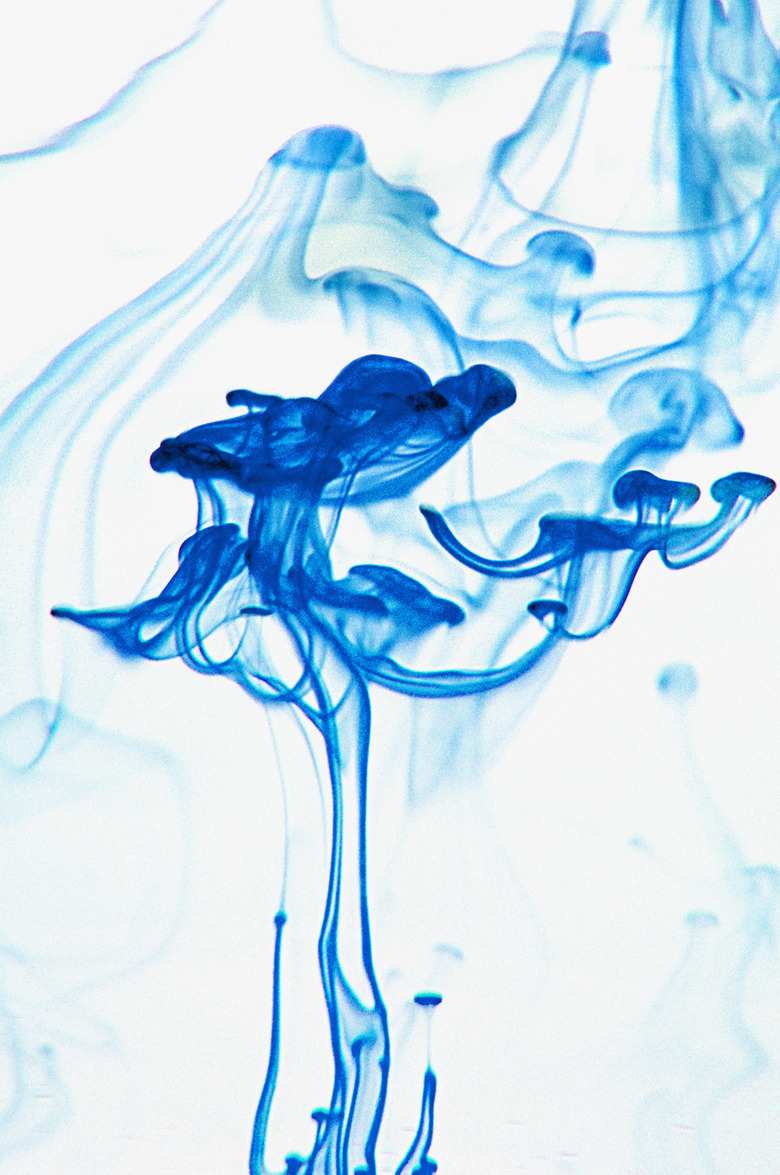How To Separate The Components Of Ink
Ink chromatography, the process of separating ink, is a simple science experiment commonly found in K-12 science curricula. It can be useful in identifying unknown solutions as well. Through the submersion of chromatography paper into water, any sample of ink can be separated into its respective cyan, magenta, and yellow components. The water causes the ink molecules to "travel" up the paper strip. Depending on the mass of the molecule, various pigments will travel faster than others, causing the separation.
Step 1
Cut the chromatography paper into sections measuring 12 cm by 2 cm if you do not have access to pre-made strips.
Step 2
Draw a pencil line across the strip 2 cm from the bottom.
Step 3
Dot a small, concentrated circle of ink on the center of the line.
Step 4
Pierce the base of the cork stopper with the paper clip. Attach the other end of the clip to the paper strip by piercing a hole through the end opposite of the pencil line.
Step 5
Fill the test tube with enough water to submerge the end of the strip without touching the pencil line or ink dot.
Step 6
Place the cork in the test tube with the strip hanging down.
Step 7
Remove the strip and place it on a flat surface. The ink will have separated into various pigments.
Things Needed
- Chromatography paper or strips
- Pens, markers, or another source ink
- Test tube
- Cork stopper
- Paper clip
- Pencil
- Water
TL;DR (Too Long; Didn't Read)
If your ink does not separate, it may be a pure dye or alcohol-soluble.
Cite This Article
MLA
Tiner, Anna. "How To Separate The Components Of Ink" sciencing.com, https://www.sciencing.com/separate-components-ink-8743253/. 24 April 2017.
APA
Tiner, Anna. (2017, April 24). How To Separate The Components Of Ink. sciencing.com. Retrieved from https://www.sciencing.com/separate-components-ink-8743253/
Chicago
Tiner, Anna. How To Separate The Components Of Ink last modified March 24, 2022. https://www.sciencing.com/separate-components-ink-8743253/
